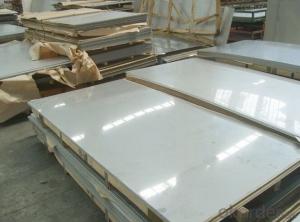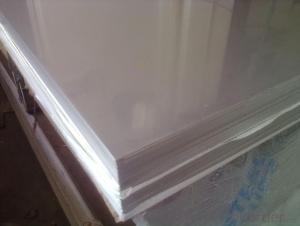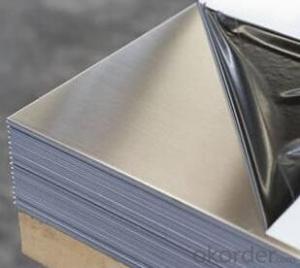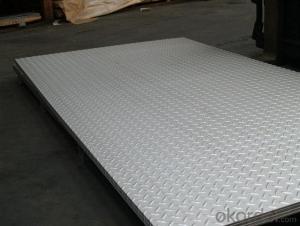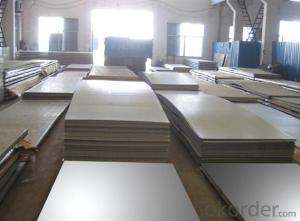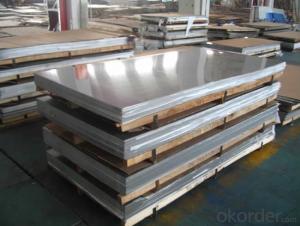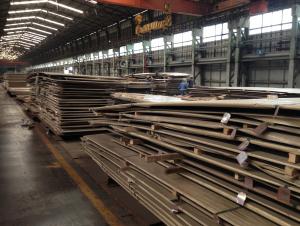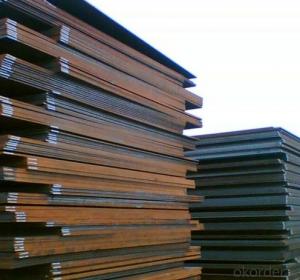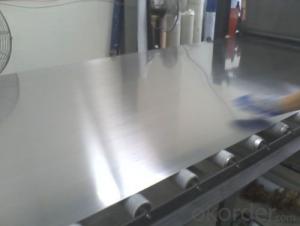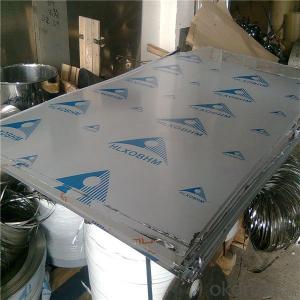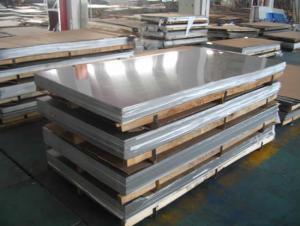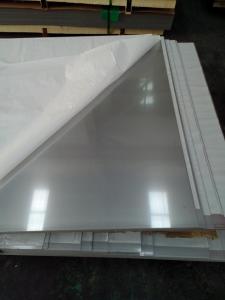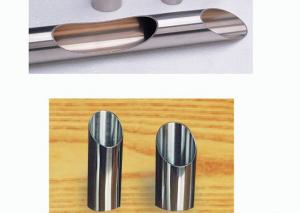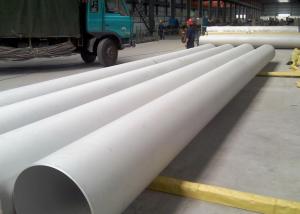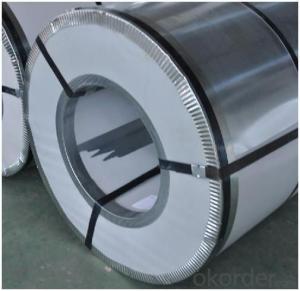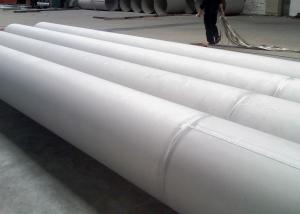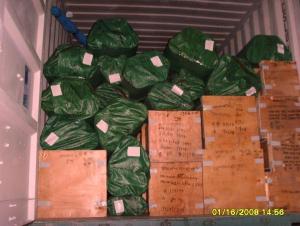steel plate of Stainless
- Loading Port:
- China Main Port
- Payment Terms:
- TT OR LC
- Min Order Qty:
- -
- Supply Capability:
- -
OKorder Service Pledge
OKorder Financial Service
You Might Also Like
According to the method of cold and hot points two kinds, including 0.5 4 mm thickness of plates and 4.5-35 mm thick plate.
According to the characteristics of the steel group is divided into five categories: austenitic size, austenitic grain size, iron-iron grain size, shape, markov precipitation sclerosis type.
Requests can withstand oxalic acid, sulfuric acid, nitric acid, nitric acid-ferric sulfate-hydrofluoric acid, sulfuric acid, phosphoric acid, formic acid, copper sulfate, acetic acid, etc. Various kinds of acid corrosion, widely used in chemical industry, food, medicine, paper making, oil, atomic energy industry etc, as well as the construction, kitchen utensils, tableware, vehicles of all kinds of parts, household appliances.
In order to ensure that each kind of stainless steel plate of the yield strength, tensile strength, elongation and hardness of mechanics performance accords with a requirement, steel plate must pass before delivery annealing, solid solution treatment, aging treatment of heat treatment, etc.
Stainless steel plate [1] the surface is bright and clean, have a high plasticity and toughness and mechanical strength, acid and alkaline gas and other media, the solution of the corrosion. It is not an easy to rust of alloy, but not absolutely doesn't rust.
Stainless steel corrosion depends primarily on its alloy composition (chrome, nickel, titanium, silicon, aluminum, etc) and internal organizational structure, plays a main role is chrome elements. Chrome has the very high chemical stability, can in the steel surface passivation membrane formation, the metal and isolated, protect steel plate were not oxidation, enhance the steel corrosion resistance. Passivation membrane destruction, the corrosion resistance will decline.
- Q: Can stainless steel sheets be used for decorative panels?
- Yes, stainless steel sheets can definitely be used for decorative panels. Stainless steel is known for its durability, strength, and resistance to corrosion, making it an excellent choice for decorative purposes. It is widely used in interior design, architecture, and various industries for its aesthetic appeal. Stainless steel sheets can be customized with different finishes, such as brushed, polished, or patterned, to create unique and visually appealing decorative panels. Additionally, stainless steel sheets can be easily cut, shaped, and formed into various designs, making them versatile for different decorative applications. Whether it is for wall cladding, elevator interiors, furniture accents, or signage, stainless steel sheets offer a modern, sleek, and sophisticated look that enhances the overall aesthetics of any space.
- Q: Can stainless steel sheets be used in the construction industry?
- Yes, stainless steel sheets can be used in the construction industry. Stainless steel is a versatile material that offers various benefits, making it suitable for different construction applications. One of the main advantages of stainless steel sheets is their excellent corrosion resistance. They are highly resistant to rust and staining, making them ideal for outdoor structures or areas with high moisture or chemical exposure. This durability ensures a longer lifespan and lower maintenance costs for the construction project. Stainless steel sheets are also known for their strength and toughness. They have a high tensile strength, allowing them to withstand heavy loads and impacts. This makes them suitable for structural components such as beams, columns, and support systems. Furthermore, stainless steel sheets offer aesthetic appeal due to their sleek and shiny appearance. They can be easily fabricated and shaped into various forms, allowing for creative and visually appealing architectural designs. Stainless steel is often used in cladding, roofing, and decorative elements in modern buildings. In addition to their physical properties, stainless steel sheets are also environmentally friendly. They are 100% recyclable, which reduces waste and conserves resources. This makes them a sustainable choice for construction projects aiming for green building certifications. Overall, stainless steel sheets are a reliable and versatile material that can be used in a wide range of construction applications. Their corrosion resistance, strength, aesthetics, and environmental sustainability make them a popular choice in the construction industry.
- Q: Are stainless steel sheets suitable for elevator interiors?
- Yes, stainless steel sheets are highly suitable for elevator interiors due to their durability, corrosion resistance, and aesthetic appeal.
- Q: What is the elongation percentage of stainless steel sheets?
- The elongation percentage of stainless steel sheets can differ based on the particular grade and thickness of the material. Typically, stainless steel sheets possess a moderate elongation percentage, typically falling between 40% and 60%. Nevertheless, specific grades of stainless steel, particularly those with elevated nickel content like austenitic stainless steel, may demonstrate higher elongation percentages, frequently surpassing 60%. It is crucial to acknowledge that the elongation percentage serves as a gauge for the material's capacity to undergo plastic deformation prior to fracturing, thereby indicating its ductility.
- Q: Are stainless steel sheets safe for medical applications?
- Yes, stainless steel sheets are safe for medical applications. They are widely used in the medical industry due to their excellent corrosion resistance, biocompatibility, and durability. Stainless steel is easy to clean, sterilize, and maintain, making it suitable for surgical instruments, medical devices, and equipment used in healthcare settings.
- Q: How do you drill holes in stainless steel sheets?
- To achieve accurate and clean results, it is necessary to follow specific steps and use the right tools when drilling holes in stainless steel sheets. Here is a detailed guide on how to accomplish this task: Step 1: Gather the required tools, including a drill machine, suitable drill bits for stainless steel (cobalt or carbide are recommended), a center punch, safety goggles, work gloves, and a clamp or vise to secure the stainless steel sheet. Step 2: Select the appropriate drill bit. Since stainless steel is a tough material, regular drill bits may not be effective. Instead, opt for cobalt or carbide drill bits that are specifically designed for cutting through hard metals. Step 3: Mark the hole position by using a center punch to create a small indentation at the exact spot where you intend to drill. This will prevent the drill bit from slipping when starting the hole. Step 4: Firmly secure the stainless steel sheet using a clamp or vise on a workbench or surface. This will prevent any movement during drilling and ensure precise and clean holes. Step 5: Prioritize safety by wearing safety goggles and work gloves to protect your eyes and hands from metal debris and sharp edges. Step 6: Begin drilling by placing the drill bit on the marked indentation and applying gentle pressure to start the hole. Use a lower speed setting on your drill machine to prevent overheating, gradually increasing the pressure as you continue drilling. Step 7: Apply cutting fluid or lubricant on the drill bit while drilling to reduce friction and heat buildup. This will extend the life of the drill bit and prevent discoloration or warping of the stainless steel sheet due to excessive heat. Step 8: Monitor the drilling progress and adjust the speed and pressure accordingly. It is crucial to maintain a steady pace and avoid applying excessive force to prevent drill bit breakage or damage to the stainless steel sheet. Step 9: Periodically stop drilling to remove metal debris from the hole, ensuring that it does not clog and that the hole remains clean. Step 10: Once the desired hole size is achieved, slowly withdraw the drill bit from the stainless steel sheet. Use a file or deburring tool to smooth out any rough edges around the hole. By following these steps and utilizing the appropriate tools, you can successfully drill precise and clean holes in stainless steel sheets. Remember to take your time, prioritize safety, and properly maintain your tools for optimal results.
- Q: What are the different types of stainless steel sheets available?
- When considering stainless steel sheets for your project or application, it is crucial to take into account the specific requirements, as there are several varieties available in the market, each with its own unique properties and applications. Here are some of the most common types: 1. Austenitic Stainless Steel Sheets: Widely used and highly popular, this type of stainless steel offers exceptional corrosion resistance, high strength, and good formability. It finds extensive usage in kitchen equipment, food processing plants, and pharmaceutical industries. 2. Ferritic Stainless Steel Sheets: Distinguished by a higher chromium content and lower carbon content in comparison to austenitic stainless steel, ferritic sheets are renowned for their outstanding stress corrosion cracking resistance. They are commonly utilized in automotive applications, architectural structures, and appliances. 3. Martensitic Stainless Steel Sheets: Boasting a higher carbon content than other types, martensitic sheets provide exceptional strength and hardness. They are frequently employed in applications requiring wear resistance, such as cutlery, surgical instruments, and turbine blades. 4. Duplex Stainless Steel Sheets: These sheets possess a mixed microstructure of austenite and ferrite, offering a combination of high strength and excellent corrosion resistance. They often find application in chemical processing plants, oil and gas industries, and marine environments. 5. Precipitation Hardening Stainless Steel Sheets: Heat-treatable and known for their high strength and corrosion resistance, precipitation hardening sheets are commonly found in aerospace applications, defense equipment, and high-performance industries. Considering the unique properties and advantages of each type, it is crucial to carefully evaluate the specific requirements of your project or application when selecting the appropriate stainless steel sheet.
- Q: Are stainless steel sheets available in different colors?
- No, stainless steel sheets are typically only available in their natural silver color. Stainless steel is a type of steel alloy that contains chromium, which gives it its characteristic silver appearance. While it is possible to treat stainless steel sheets with various coatings or finishes to achieve a different color, such as black or gold, these are not typically available as standard options. However, there are alternatives like powder coating or painting stainless steel sheets to achieve different colors, but these processes may affect the material's corrosion resistance and durability.
- Q: What are the costs of stainless steel sheets compared to other materials?
- The costs of stainless steel sheets can vary depending on several factors such as the grade, thickness, size, and finish of the sheets. Generally, stainless steel sheets tend to be more expensive than other materials like aluminum or mild steel. This is primarily due to the higher production costs and the unique properties of stainless steel. Stainless steel is known for its corrosion resistance, durability, and aesthetic appeal, which makes it a popular choice in various industries such as construction, automotive, and manufacturing. However, these desirable qualities come at a higher price point. Compared to aluminum sheets, stainless steel sheets are typically more expensive. Aluminum is a lightweight material with good corrosion resistance, but it is not as strong or durable as stainless steel. Therefore, stainless steel is often preferred in applications where strength and longevity are crucial. When compared to mild steel, stainless steel sheets are also more costly. Mild steel is a commonly used material due to its affordability, but it lacks the corrosion resistance and aesthetic appeal of stainless steel. Stainless steel is often chosen over mild steel in applications where exposure to moisture, chemicals, or harsh environments is a concern. It is important to consider the specific requirements of the project when evaluating the costs of stainless steel sheets compared to other materials. While stainless steel may have a higher upfront cost, its long-term benefits, such as reduced maintenance and replacement costs, can often outweigh the initial investment. Additionally, the unique properties of stainless steel may make it the only viable choice for certain applications, further justifying its higher cost.
- Q: What's the difference between stainless steel 304 2B board and Ba board?
- 304 stainless steel2B board: without glossBA board: an ordinary mirror that shines a littleStainless steel and mirror, that is, 8K board, like a mirror
Send your message to us
steel plate of Stainless
- Loading Port:
- China Main Port
- Payment Terms:
- TT OR LC
- Min Order Qty:
- -
- Supply Capability:
- -
OKorder Service Pledge
OKorder Financial Service
Similar products
Hot products
Hot Searches
Related keywords
